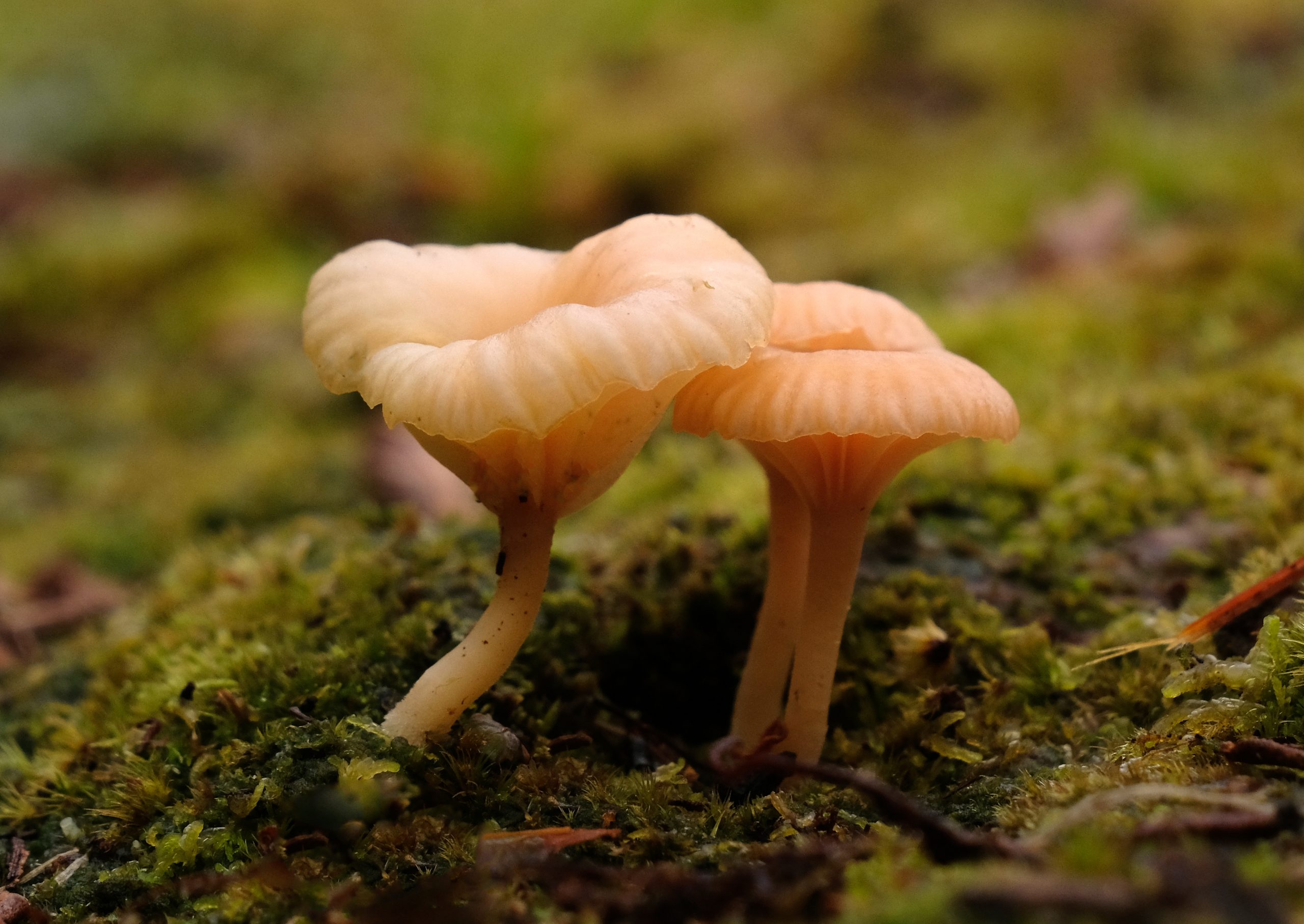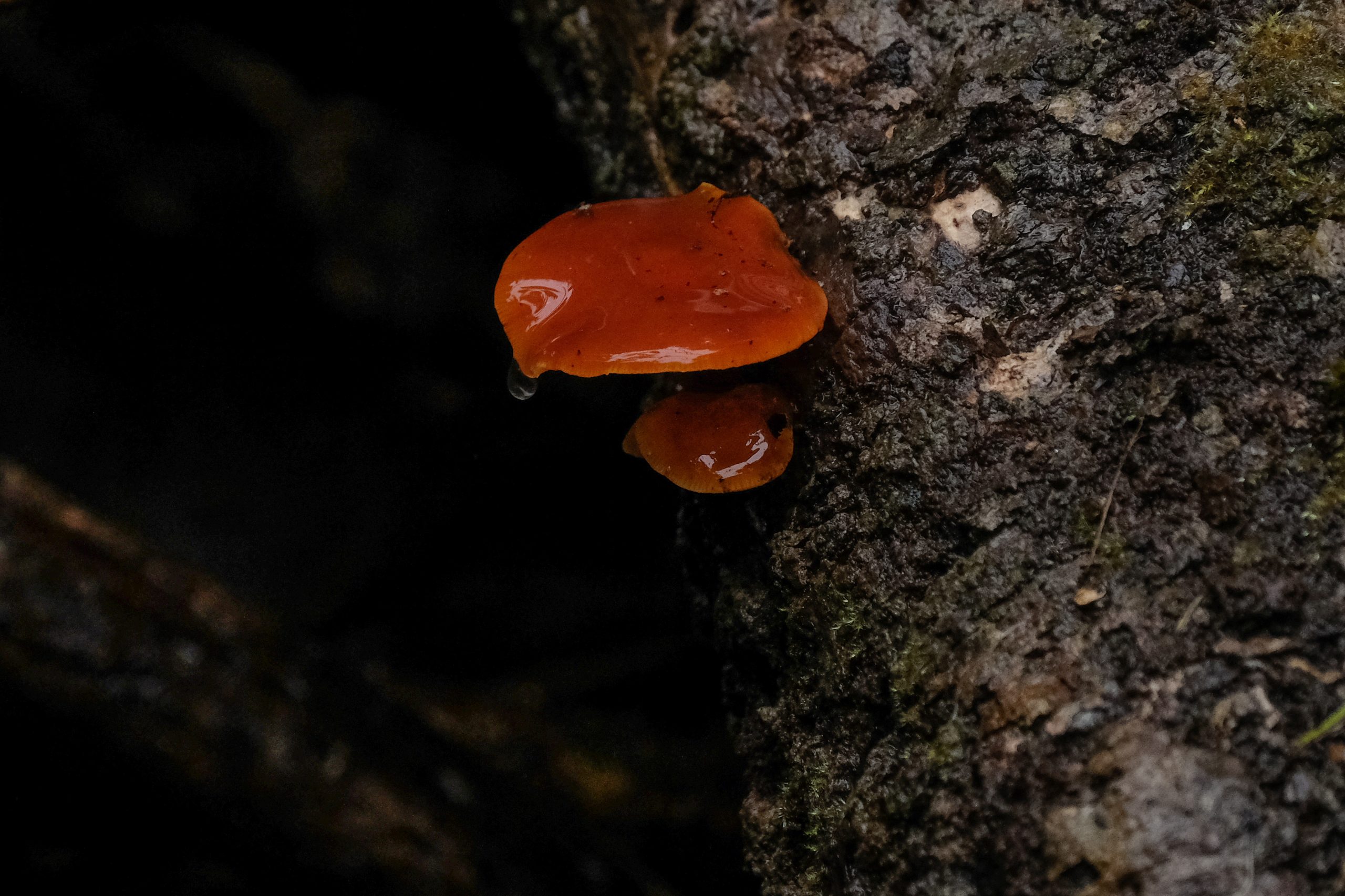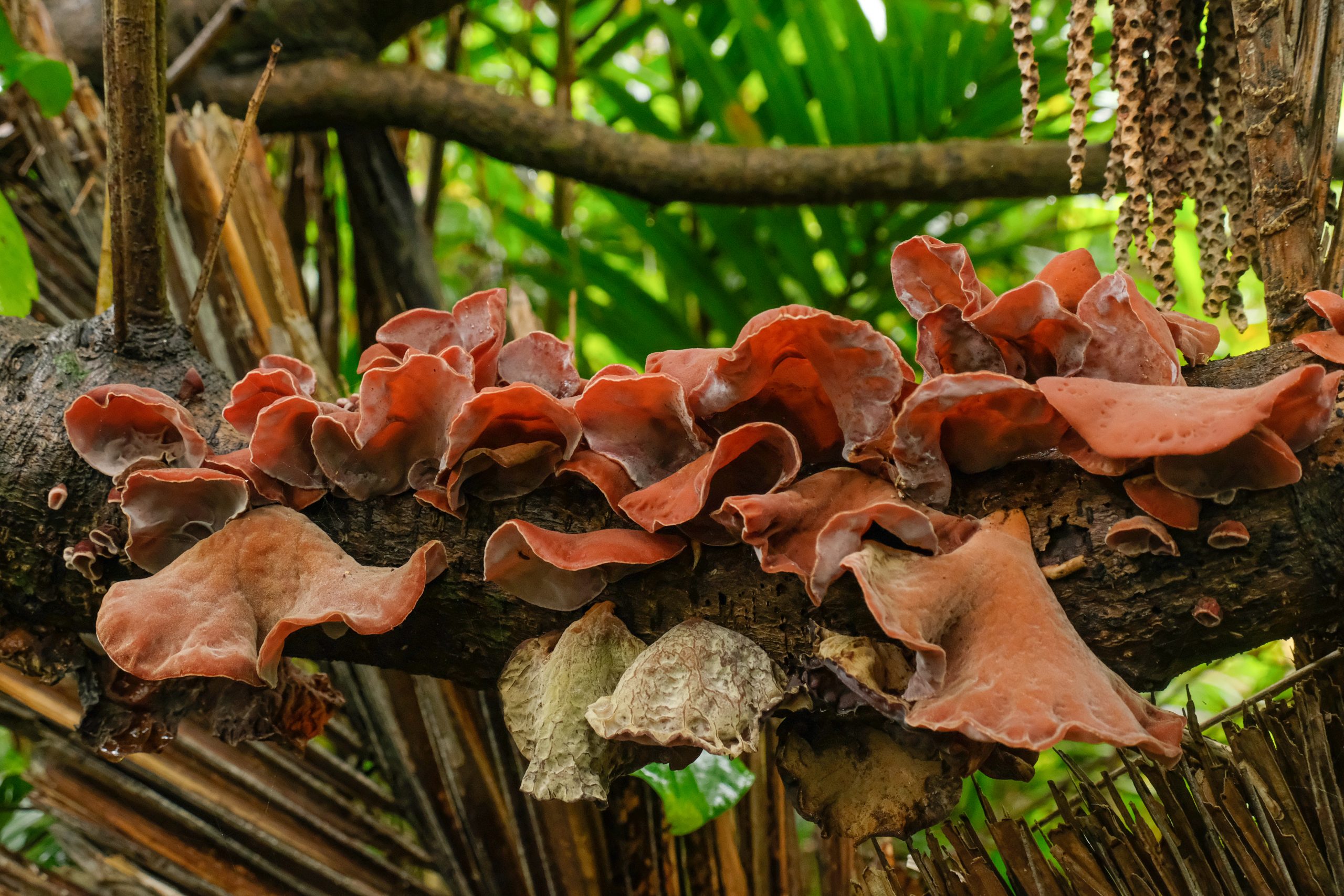Chatham Island Plantlife
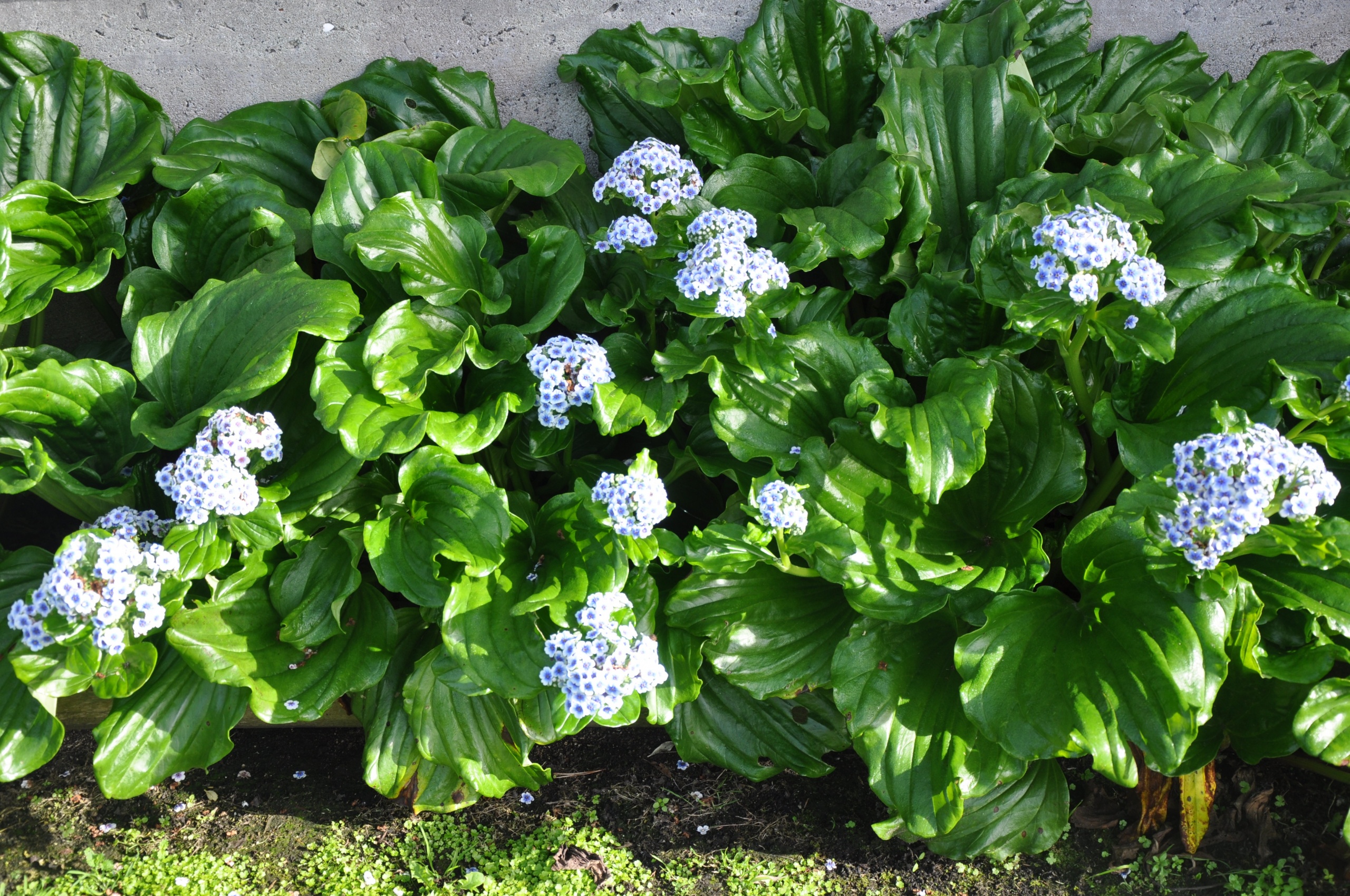
Over 730 species of plants are present on these islands.
Among the endemic plants are the two monotypic benera; Embergeria (Chatham Island sow thistle) and Myosotidium (Chatham Islands forget-me-not)
There are other endemic plants that are also becoming more widely known, including the Keketerehe or Chatham Island tree-daisy, Chatham Island aster and Rautini or Chatham Island christmas tree.
Plants of the Chathams tend to show a much higher proportion of coloured flowers than in mainland New Zealand. eg: Chatham Island forget-me-not (blue), linen flax (blue), Chatham Island geranium (pink), swamp aster (mauve), keketerehe (purple), and giant sowthistle (purple).
Also, the leaves of Chathams species are also often fleshier and trees bigger than their New Zealand counterparts. Chathams plants do not generally show juvenile forms.
The Chatham Islands has the highest number of endemic plants of all the other outlying islands of the New Zealand archipelago.
 Some 47 species of plants are considered endemic to these islands, including varieties of forest trees, giant herbs, seaweeds, flowering plant species, subspecies, and varieties, and 1 fern. There are also a number of yet undescribed forms that may also be endemic.
Some 47 species of plants are considered endemic to these islands, including varieties of forest trees, giant herbs, seaweeds, flowering plant species, subspecies, and varieties, and 1 fern. There are also a number of yet undescribed forms that may also be endemic.
Plants of the Chathams show a much higher proportion of coloured flowers than of those in mainland New Zealand.
eg: Chatham Island forget-me-not (blue), linen flax (blue), Chatham Island geranium (pink), Swamp aster (mauve), Keketerehe (purple), and Gant sowthistle (purple).
Leaves of Chathams species are also often fleshier and trees bigger than their New Zealand counterparts.
Many of the regenerating coastal broad-leaf forests show stunted akeake and mahoe with wind-shorn canopies near the shore. Inland and in more sheltered sites these are joined by taller matipo, karamu and kopi.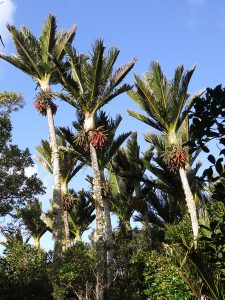
The kopi (karaka), now widespread, is considered to have become naturalised after being introduced by Moriori. The fruit, once detoxified, being an important seasonal food source. Inland, nearer Te Whanga lagoon, at Nikau Bush the endemic nikau palms tower above the forest canopy. They are spectacular in flower and fruit and with certain features differing from their New Zealand counterparts may, with more research, be described as a distinct taxon. Nikau on Pitt Island, have the distinction of being the southernmost palms in the world.
Plants commonly found in this zone include: akeake, karamu, kopi, mahoe, matipo, nikau
Near the limestone cliffs at Blind Jims, there is a remnant stand of akeake and some scattered kopi, karamu and hoho. On the cliffs themselves, kowhai is commonly mixed with mahoe, and the shrubs kawakawa, koromiko and poroporo. The kowhai, stunning when flowering in August-November, is not common on the Islands and may have been introduced by Maori.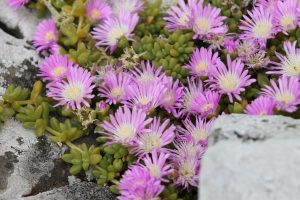
The schist at Point Munning is quite strikingly patterned and growing on the rocks are two interesting plants. The endemic ice-plant, with its abundant pink flowers in spring and summer, flows over the rocks, while a small, pretty fern (spleenwort) grows in the rock crevices and on the ground. Flax, and a number of different sedges and grasses also grow in the peaty soil between the larger rock outcrops.
On Pitt Island the exposed summit of Hakepa carries an open fernland with a great variety of herbs while the sheltered deep hollows carry shrubby tarahinau, rautini and flax.
Plants that are commonly found in this zone include: kowhai, ice-plant, and spleenwort
Chatham Island peat bogs abound in endemic species: Bamboo rush dominates with the southern heath, inaka, mingimingi and Chatham Island aster as a shrubby component on the slightly drier sites. Chatham Island speargrass is often common also and on open ground Chatham Island gentian. Flax and bracken fern are abundant.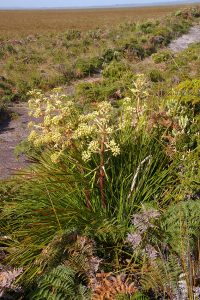
Heathlands and wetlands occur where the water-table is near the surface and the vegetation is dominated by a mixture of shrubs, flax, ferns, sedges and rushes. The Ocean Mail boardwalk and the Aster walk provide good examples of these communities.
Included in these habitats are;
Bamboo rush, Chatham Island aster, Chatham Island gentian, Chatham Island mingimingi, Chatham Island speargrass, Chatham Islands toetoe, inaka
Both the Chatham Island forget-me-not and Chatham Island sow thistle grow on the fore-dunes. Once common, their roots were a favourite food for wild pigs and stock and they quickly disappeared.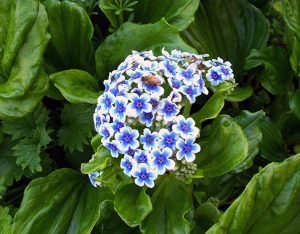
With fences protecting the beaches and some replanting they are now increasing and once again flourish in their salt-laden habitats. Forget-me-nots can also be seen in gardens throughout the Islands. They flower in September-October. Sow thistle flowers December-February.
Another sand dune species is experiencing a recovery with the introduced marram grass being replaced in some areas by the native, sand-binding sedge, pingao. On the higher dunes there are a variety of interesting plants to be found: sand daphne, hokataka, sand coprosma, the endemic Chatham Island geranium, and Chatham Island mingimingi – the latter with a very unusual distribution, being found in Australia, Lord Howe Island and Chatham Islands.
Species commonly found in this zone include;
Chatham Island forget-me-not, Chatham Island geranium, Chatham Island mingimingi, Chatham Island sow thistle, hokataka, pingao, tataraheke (sand coprosma) and toroheke (sand daphne)
The forests on the southern cliffs of Chatham Island are often dominated by the distinctive, endemic grass-tree that grows to over 10m in height on deep peaty soils.
The gnarled trunks are covered in ferns and other epiphytes and ground ferns and tree ferns are abundant within the forest and around the margins, contrasting with more open areas near the cliff lines that are home to the endemic Chatham Island tree daisy, together with shrubs such as inaka, and sedges, grasses, and the ground-covering carpet heath. Nearer the coast in the southwest it is often mixed with hoho, akeake, matipo and other broadleaved species.
The Tarahinau forests of both Chatham and Pitt Islands are the source of the vast expanses of peat soils on those same islands, with an almost constant supply of needle-like leaves providing nourishment for the soils.
Common plants to be found in the Tarahinau forest zones include; Chatham Island tree daisy, hoho (Chatham Islands lancewood), inaka, tarahinau and ponga
There are at least 5 endemic species of fungi on the Chatham Islands and although fungi are not strictly "plants" they have been assigned to this page for ease.
Lichens are a special group of fungi (they are not "plants"). The specific characteristic of a lichen is that they are a fungi that have a symbiotic arrangement with either green or blue algae. Algae are not plants either. They are photosynthetic microorganisms. (They are neither plant, animal or fungi.)
There is at least 1 endemic Chatham Island lichen (Caloplaca maculata).
There are nearly 300 hornwort and liverwort present on the islands
There is one endemic species of moss and one endemic variety of liverwort
There are approximately 200 species of mosses present on the Chatham Islands. Only one of these (Macromitrium ramsayae) is endemic. a couple of species are naturalised to the islands and the rest are indigenous to New Zealand or further afield.
One species (Encalyptra rhaptocarpa ) which is quite uncommon in mainland New Zealand, usually restricted to alpine environments and particularly partial to limestone rock has been found in one of the holes on Mount Hakepa on Pitt Island.
There are other species present that are also considered endangered or rare, in main land New Zealand
Lichens are a special group of fungi (they are not "plants"). The specific characteristic of a lichen is that they are a fungi that have a symbiotic arrangement with either green or blue algae. Algae are not plants either. They are photosynthetic microorganisms. (They are neither plant, animal or fungi.)
The Chatham Island lichen (Caloplaca maculata) was believed to be endemic, until a recent discover on the Dunedin Peninsula put that theory to rest. so whilst it may be indigenous, it is not endemic to the Chathams.
For a detailed look at Chatham Island Lichens and their distribution pleases follow this link >>>>>>>>

